As I type this newsletter, my Twitter feed is filling with footage of American soldiers—National Guardsmen from states across the nation—flooding into American cities. The purpose of this newsletter is to explain why this is, on balance, a good thing, but not for the reasons you might think. It’s not because the military is likely to bring “overwhelming force”—as you’ve seen (mainly) conservative writers and politicians demand during these days of chaos. It’s because they’ll bring overwhelming presence, and that overwhelming presence is likely to decrease the need for overwhelming force.
Indeed, if in the coming days we see American troops engaged in urban combat, we should view that as a terrible failure—a return to the nightmares of days gone by.
But first, a bit of personal backstory. One of the reasons why I’ve decisively changed my assessment of the problems of American policing is that I consistently saw American police at home exercise less discipline and less tolerance for risk than American soldiers deployed in war. Facing lesser risks, they were more apt to pull the trigger. Facing fewer threats, they were more apt to lash out. Not all of them, of course. Not most of them, but all too many—enough to trigger the national crisis we now face.
And while the nightly news and our social media feeds are filled with terrible images of utterly unjustifiable looting and violence, I’m also seeing something else—repeated images of breakdowns in police discipline and often inexplicable uses of force.
Remember Homer Simpson’s famous declaration that beer was the “cause of, and solution to, all of life’s problems”? That may be true of a glass (or several) of Guinness, but it’s not true in public policy. It’s hard for the cause of the problem to present the solution to the problem. A police force that has lost trust is often ill-equipped to regain order—often for the very reasons that it lost trust in the first place.
The military, by contrast, is the most trusted institution in the United States, and the public supports sending troops to American cities to combat riots by an almost 30-point margin. Barring an unforeseen disaster, my own experience teaches me that this confidence is likely justified—in large part because American troops are likely to end the violence without first increasing the violence.
This was not always so. In fact, the American military is trusted now in large part because it learned from failures past. Let’s take the horrific riots that rocked American cities in the late 1960s. In those circumstances, when the National Guard arrived, “overwhelming force” was indeed likely to follow and that force led to pitched battles in the streets. If you’re interested in the historical record, I recommend reading the Center of Military History’s The Role of Military Forces in Domestic Disorders, 1945-1992, by Paul J. Scheips.
Time and time again—during the riots in Watts, Newark, and Baltimore—mayors and governors appealed to the National Guard to put down riots when police forces were overrun or outmatched. And time and time again the National Guard employed extraordinary and sometimes indiscriminate force—killing men and women by the dozens and wounding civilians by the hundreds. During the 1965 Watts Riots, 34 people died and 1,032 were injured. The 1967 Newark riots took 27 lives and wounded 727. The 1967 Detroit riot resulted in the deployment of the National Guard and elements of the active-duty 82nd and 101st Airborne divisions. A total of 43 people died, and more than 1,000 were wounded.
Moreover, the National Guard was profligate in its use of its weapons. Here’s Scheips describing the urban combat in Watts:
A hail of gunfire by rioters, guardsmen, and police indicated both the savagery of the riot and possible poor training among the troops. The California National Guard’s after-action report was silent on the quantity of ammunition expended, but guardsmen evidently used their weapons freely. At the beginning and end of the trouble, squad leaders controlled ammunition, with one man in each squad responsible for returning fire directed at the unit. For much of the riot, however, all guardsmen were apparently issued ammunition, authorized to carry loaded weapons, and permitted to fire as necessary “to ensure their safety and accomplish their missions.” In at least one instance, an officer allowed his troops to fire thirty-five rounds from a .30-caliber machine gun at rooftop snipers. There were also a number of instances in which troops fired at vehicles attempting to crash roadblocks, sometimes with fatal effect.
The ammunition expenditure numbers in Newark and Detroit are astonishing. During the Newark riot, “state police fired a total of 2,905 rounds of ammunition in a variety of calibers … while the National Guard expended 10,414.” In Detroit, the story was grim:
The record makes it clear that the guardsmen reacted to the sniping, or rumors of sniping, with little or no weapons discipline. With live rounds chambered, safeties on, and guns at the ready, the troops entered the riot-torn city in possession of only broad guidelines from state authorities on how and when they could use their weapons. Inevitably, they began to fire freely, adding to the danger and pervasive fear already present in the city.
There was a tremendous difference between the discipline of the Guardsmen and the regular Army units. “As of 1800 on 28 July, a total of 155,576 rounds had been fired by the 46th Infantry Division [the guard], and only 202 by the regulars.”
Think of that volume of fire. That doesn’t represent law enforcement. It represents urban combat. And if that’s what we could expect today, you would not want to see the National Guard rolling through your streets. They wouldn’t so much be instruments of order as harbingers of destruction. They’d destroy the neighborhood to save the neighborhood.
But that was then. The military at its best is a learning organism. As Scheips’s book continues, it relates a story of plunging death rates even in the face of extraordinary unrest. Increasingly, the military learned to restore order without opening fire. Its field manual for civil disturbance operations contains page after page of tactics for controlling and dispersing crowds without using lethal munitions—where shows of force can replace uses of force, except in extreme circumstances.
In short, the evolution of military tactics (combined with hard-earned experience dealing with far more dangerous civil unrest in Iraq and Afghanistan) means that American citizens who see Humvees in their streets are now looking at men and women who are a) trusted by the majority of the community; b) often more disciplined than the police; and c) better trained and equipped to handle the most volatile of public risks.
So, what’s the peril? It lies partly in the perceived purpose of the military deployment. The military will lose trust quickly if it’s seen less as an instrument of peace and stability (that protects peaceful protest as it deters crime and violence) and more as the instrument of punishment and vengeance. Yesterday I got into an online argument with Sen. Tom Cotton over this tweet:
My initial objection to the tweet was to its most obvious legal flaw—referring to “no quarter” in military operations. As I explained in my own lengthy Twitter thread, the term “no quarter” has a specific military definition—it means taking no prisoners—and such orders have been banned by American law since at least 1863:
Cotton defended himself by claiming that he meant the term only in the colloquial Webster’s definition of “no pity or mercy,” but it was wrong of him to use such an explosive military term in a specifically military context.
On reflection, however, there was something else that bothered me about Cotton’s Twitter bluster. He fundamentally misrepresented the purpose of the military deployment. It’s not to show “no mercy” (much less “no quarter”) but to restore order with minimal necessary force. It’s to avoid the “face off” or the showdown. Any other course risks the devastation of urban combat and plants the seeds of simmering rage and resentment that will bear bitter fruit in the years to come.
The hope is that the military presence deters the showdown, that it prevents violence. That’s the promise of the Humvees rolling through the streets. If deterrence fails, then—yes—the military has all the force it needs to smash any domestic riot. That’s the peril, and if that becomes necessary, then may God have mercy on us all.
One last thing …
If you’re too young to know how bad an American urban riot can become, this brief CBS News summary of the 1967 Detroit riots is worth your time. The volume of gunfire alone is profoundly chilling. May we never hear those sounds again on American soil:
Photograph of a protester speaking in front of National Guard troops by Kyle Grillot/AFP/Getty Images.
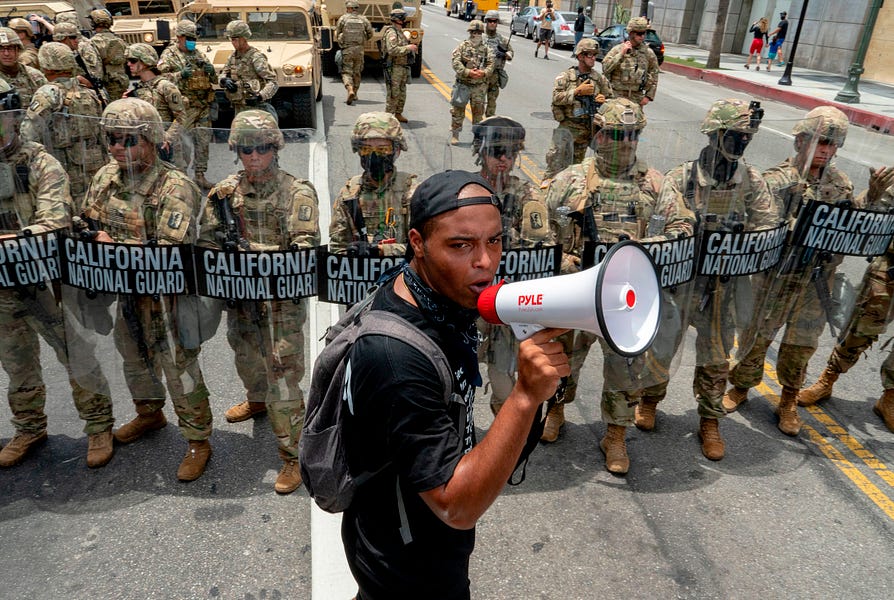

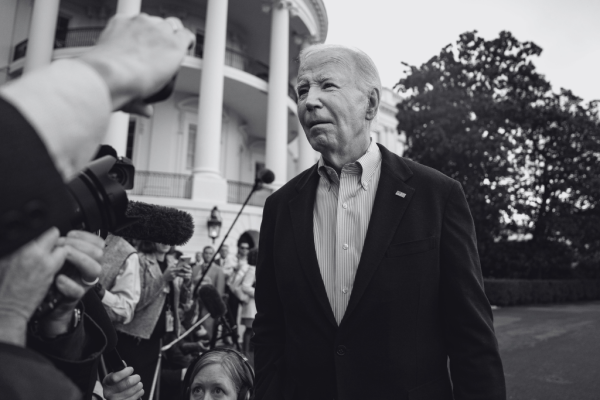
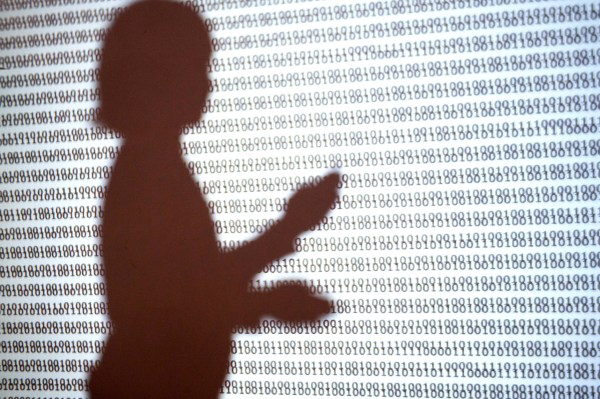
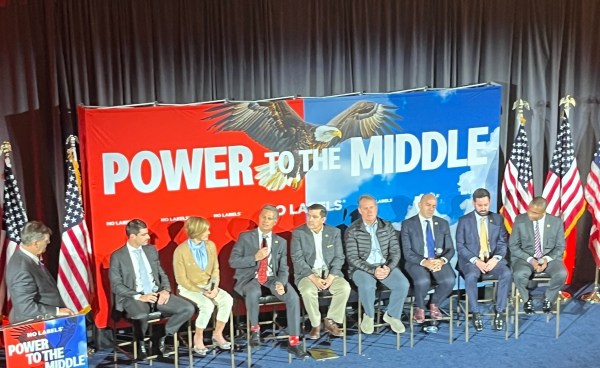

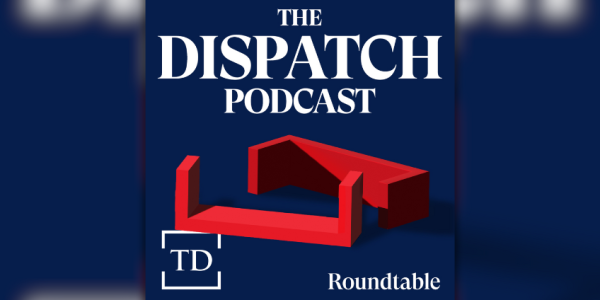
Please note that we at The Dispatch hold ourselves, our work, and our commenters to a higher standard than other places on the internet. We welcome comments that foster genuine debate or discussion—including comments critical of us or our work—but responses that include ad hominem attacks on fellow Dispatch members or are intended to stoke fear and anger may be moderated.
You are currently using a limited time guest pass and do not have access to commenting. Consider subscribing to join the conversation.
With your membership, you only have the ability to comment on The Morning Dispatch articles. Consider upgrading to join the conversation everywhere.